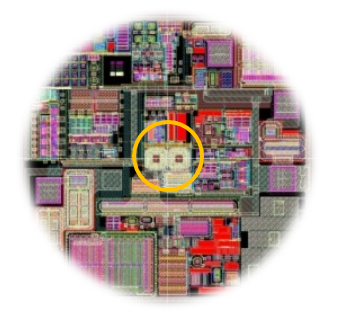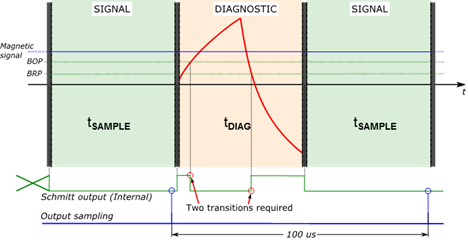Diagnostics for Built-in Self-Test (BIST)
The electronic content in automobiles has increased steadily over the past few decades and shows no signs of slowing as the industry races towards the development of fully autonomous vehicles. Advanced Driver Assistance Systems (ADAS) have generally increased driver and passenger safety, but can cause harm if they malfunction or have a design weakness. Best practices for the design and implementation of safety-critical automotive systems have been codified in the ISO 26262:2011 standard.
Allegro has a long history of providing automotive solutions and has responded to the need for enhanced safety with magnetic sensors that incorporate unique, patented self-diagnostic capabilities. These sensor ICs are capable of detecting and reporting internal malfunctions including drift in the magnetic switchpoints. They either eliminate the need for redundant sensors in safety-critical applications or increases robustness in safety-critical applications that require redundant sensors (drive-by-wire systems and so forth).
Figure 1 shows the block diagram of a Hall-effect switch with integrated diagnostics.

The earliest implementation of this feature was the addition of magnetic coils placed atop planar Hall-effect sensing elements as shown in Figure 2. These coils were made using photolithography as part of the wafer fabrication process. When energized, they generate a magnetic field that can be sensed by the Hall element(s). This exercises the entire magnetic and electrical signal path of the IC, confirming functionality. Later implementations of this technology with vertical Hall-effect sensing used electrical rather than magnetic test signals injected onto the Hall elements.


At any given time, the signal path can be in its normal mode of operation or in diagnostics mode. Diagnostics mode can be triggered on request by the host system, or it can run automatically. In the case of automatic operation, the sensor alternates between sampling the magnetic field and updating the output and running a self-test (see Figure 3). This has the potential to impact the time-domain behavior of the sensor by introducing delay or jitter in the output transitions.


However, with each succeeding generation of Allegro sensor ICs, the time required to execute the self-test has become shorter and shorter and is now measured in microseconds. Allegro’s latest magnetic sensors with integrated diagnostics feature continuous and automatic built-in-self-test (BIST) that runs in the background—the feature is transparent to the host system unless and until a fault is detected. This and other innovative features have been used to create a family of sensor and power ICs for safety-critical applications.